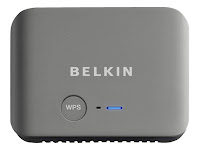If you have lost track of your custom wireless configurations like SSID, wireless encryption key etc. or want to reset your login details to defaults, you can reset your Belkin router to factory defaults. Doing so will reset your custom Belkin router settings including login details to defaults.
Check the steps given below and hard reset your Belkin router:
1. Grab a sharp/thin pin or object and keep it aside.
2. Make sure that your Belkin router is powered on. Now locate the Reset button, a tiny hole at the back of the router. The button may also be located underside the router.
3. Take the sharp pin or object and insert it in the hole. Press and hold the button for 7-10 seconds and then release it.
4. The lights will flash and the Belkin router will reset to the factory defaults. Let the router reboot fully.
5. When done, you can set up your Belkin router. To do so, connect your computer directly to the Belkin router.
6. Open your web browser and type ‘192.168.2.1’ in the address bar. Hit Enter to continue.
7. Click the Login button and enter the default router password in the Password box. Click the Submit button. If you don’t know the password, check your Belkin router setup documents.
8. When logged in, set up your Belkin router, configure wireless settings or firewall, do port forwarding, or convert it into an access point etc. (See Also Reset Wireless Password)
***Most of the Belkin routers are shipped without any password. Hence the Password field is left blank if you are using the default password. However, you must always refer to your Belkin router support manual for more specific details.

